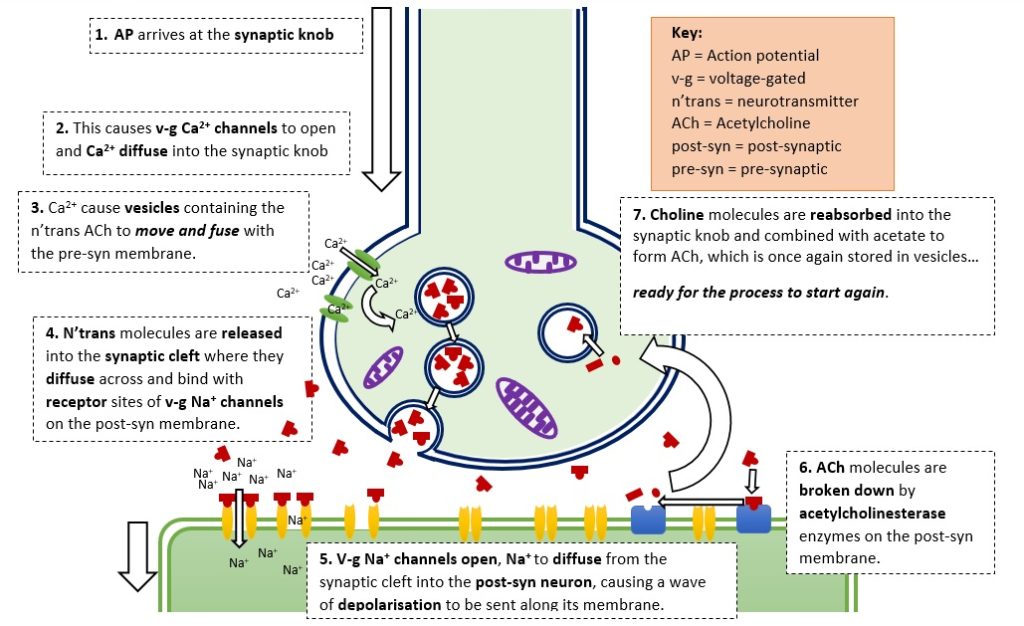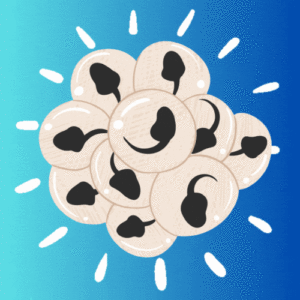Structure and function of the junctions between neurons
1. Synapses
Synapses are the junctions between neurons. They are structures where the terminal of an axon of one neuron meets (or synapses) with the dendrite of another neuron.
Below is a labelled diagram of a single neuron, indicating the way the impulse travels from the dendrites of the cell body to the axon terminals.
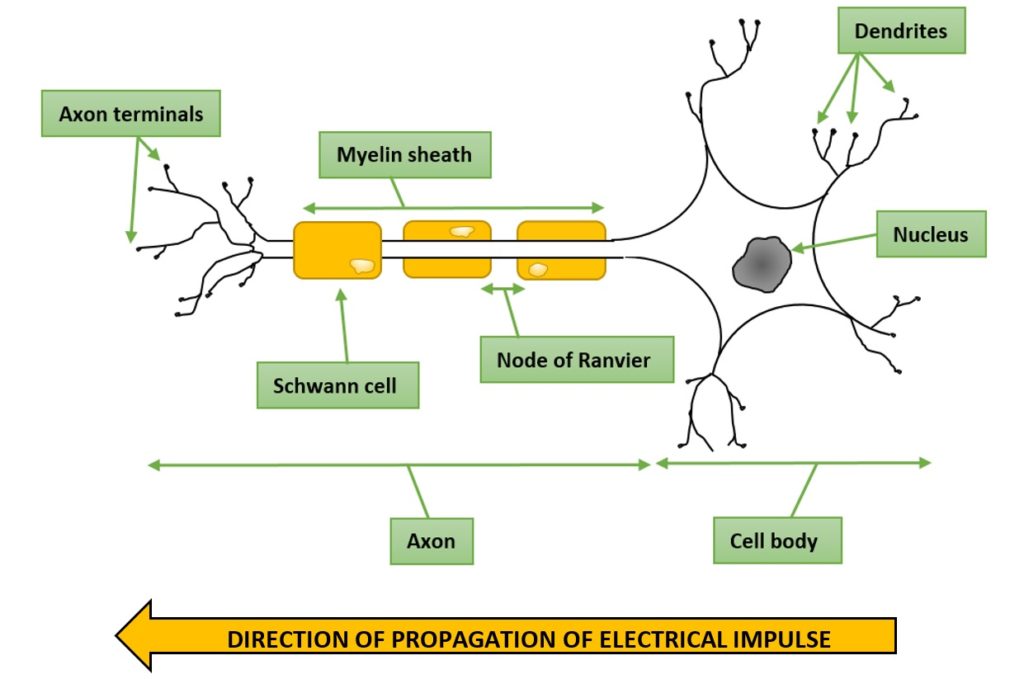
Next is a simplified diagram of many neurons synapsing with our original neuron.
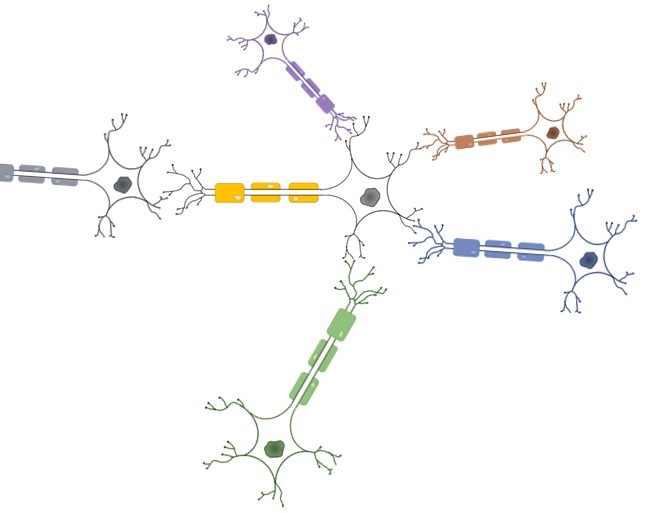
In reality not only can more than one neuron synapse with another, but more than one neuron can synapse to one dendrite.
There are two types of synapses- a chemical synapse (where a chemical neurotransmitter is released) and electrical synapsesor gap junctions (that allow current to flow through a pore from one neuron to the other).
But for now we are going to look at a typical chemical synapse between two neurons.
2. Synaptic transmission
When a nerve impulse arrives at the axon terminal of one neuron it is converted into a chemical message which is passed to the next neuron’s dendrite. Between them is a gap called the synaptic cleft over which the message is passed.
When we talk about the processes that go on at a synapse we refer to the membranes of these structures:
1. The membrane of the axon of neuron 1 is the pre-synaptic membrane (pre– meaning before, synaptic– of the synapse: i.e. “membrane before the synapse”) which is formed into the synaptic knob.
2. The membrane of the dendrite of neuron 2 is the post-synaptic membrane (post meaning after, synaptic– of the synapse: i.e. “membrane after the synapse”).
3. At a neuromuscular junction the post-synaptic membrane is that of a muscle cell called a sarcolemma.
Below is a labelled diagram of a synapse before an action potential/depolarisation has reached the synaptic knob.
The example is a cholinergic synapse, where the excitatory neurotransmitter acetylcholine is released.
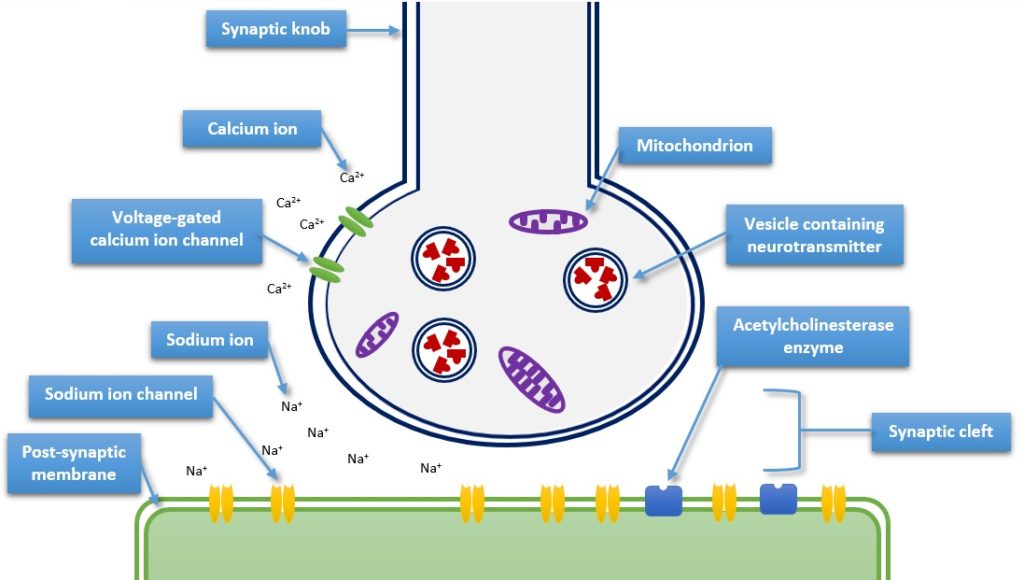
When an action potential (AP) reaches the axon terminal or synaptic knob a sequence of events is triggered that leads to a neurotransmitter (n’trans) being released into the synaptic cleft.
Below is a diagram detailing the key stages of the process at a cholinergic synapse.
